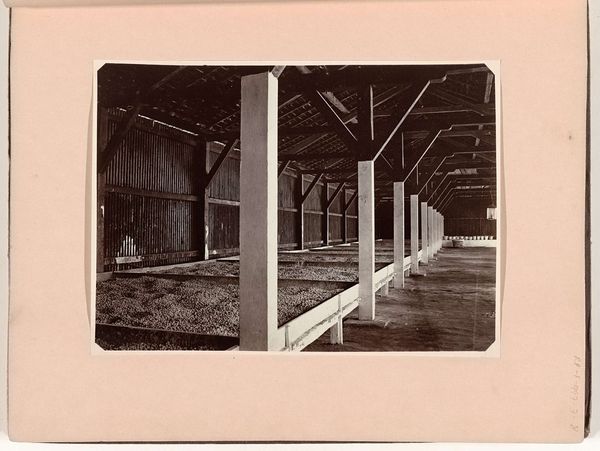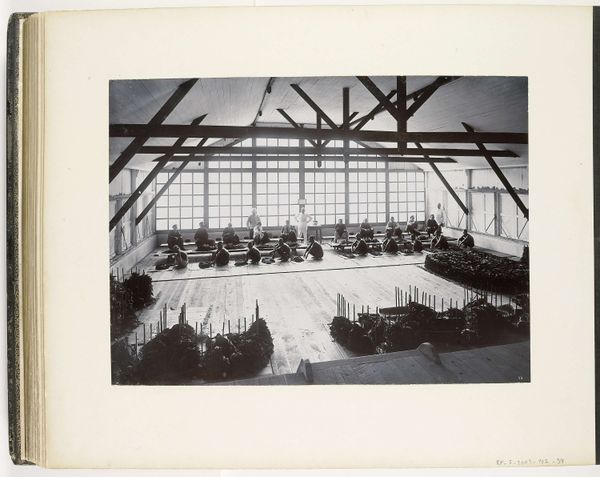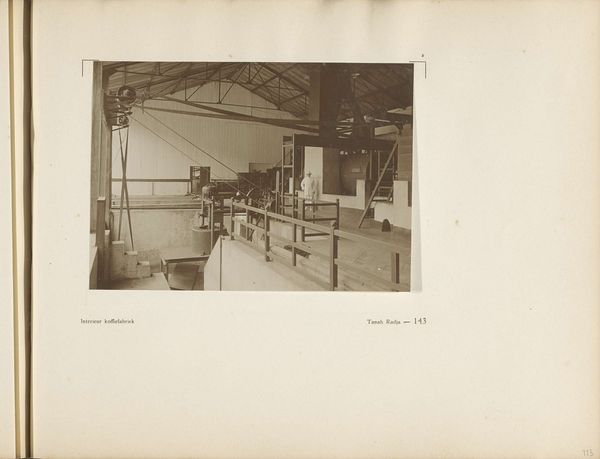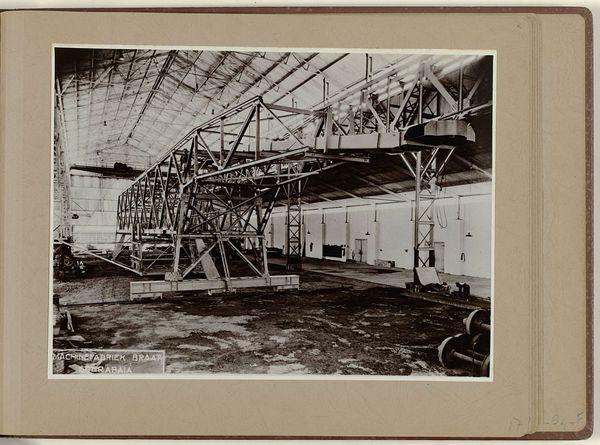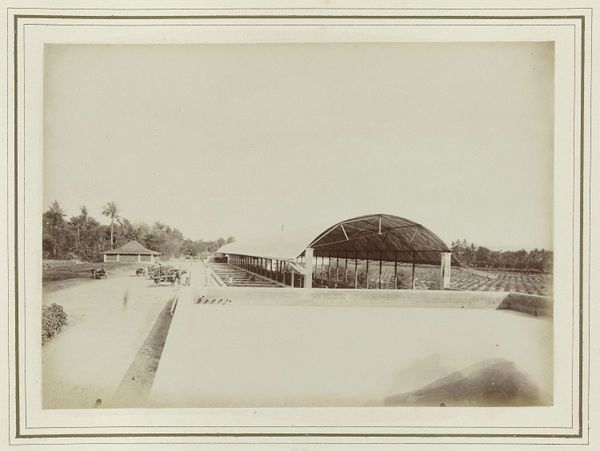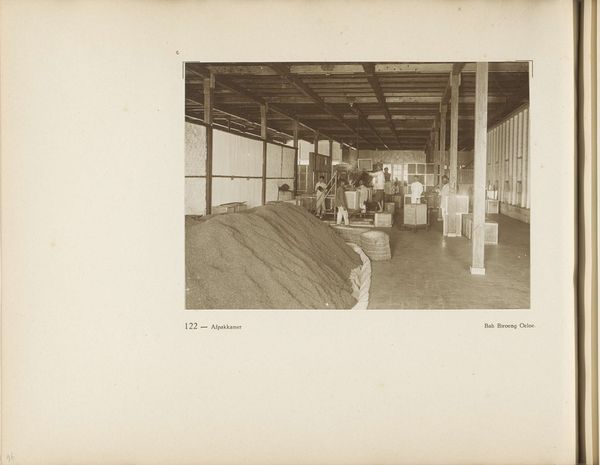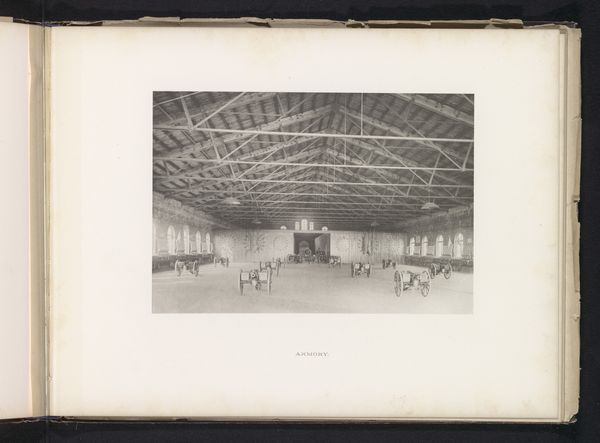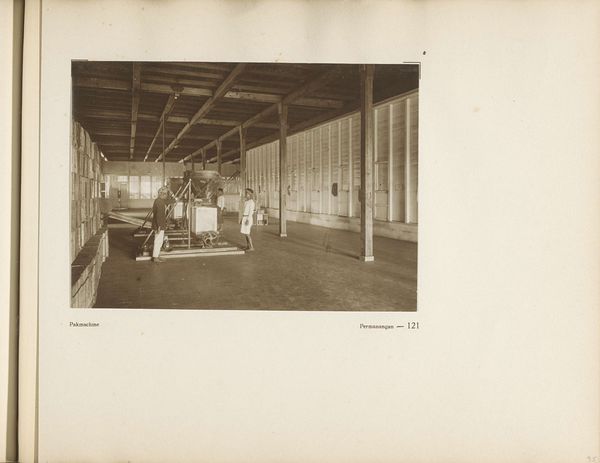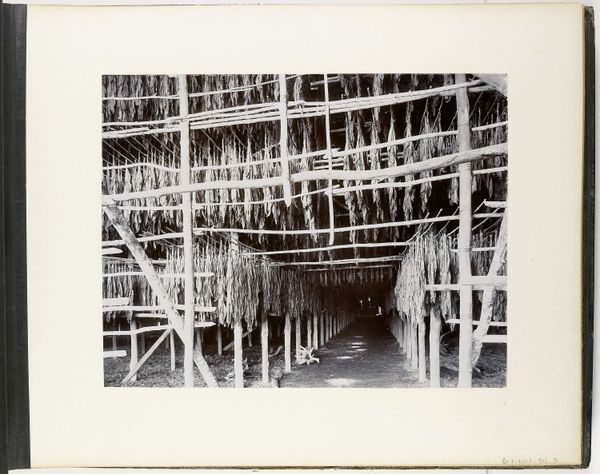
Interieur van de fermenteerschuur met tabakpersen, Padang Tjermin Sumatra (Fermentierscheune Interieur Taback Pressen Pdg. Tjermin) c. 1885 - 1900
0:00
0:00
print, photography
# print
#
landscape
#
photography
#
realism
Dimensions: height 274 mm, width 362 mm
Copyright: Rijks Museum: Open Domain
Curator: Let's explore this photographic print titled "Interieur van de fermenteerschuur met tabakpersen, Padang Tjermin Sumatra" taken around 1885-1900 by Carl J. Kleingrothe. Editor: It's an interior shot, presumably of a tobacco processing plant. It looks so orderly, but also kind of…oppressive, with those stacked bales and industrial equipment. What catches your eye? Curator: Immediately, the scale. Look at the repetitive structures – the stacks of tobacco, the press, the rafters. These aren’t just objects; they represent the labor and industry involved in colonial resource extraction. How do you think the photographer's framing influences our reading of that labour? Editor: That's a good point. Focusing on process... well, it's right there in the title: "Fermentierscheune." It directs us to consider the transformation of the tobacco leaves through labor. So, it's not just the landscape; it's about what’s being made. The making of a commodity! Curator: Precisely! The means of production are front and center. Consider the photographer's choice to include the machinery. It isn’t just documenting space; it emphasizes the technology, which speaks volumes about European colonial power at this time. Think about how this image would have been circulated and consumed. Editor: That colonial context is essential. It highlights the material processes involved and the economic structures that enabled them. What could this photography's purpose have been back then? Was it propaganda? Pure documentation? Curator: It likely served multiple purposes, acting both as a visual record and a potential promotional tool, sanitizing and celebrating the activities that secured revenue in occupied regions. Reflect on how our perception of this image changes when viewed through a materialist lens. Editor: Now, it seems that this image’s initial tidiness conceals all the cultural, social, and economic meanings around exploiting labour, resources, and regions during the colonial period. Curator: Indeed, we realize that there's a whole story encoded in its textures, repetitions, and material conditions. It challenges traditional boundaries between documentation, propaganda, and the art itself.
Comments
No comments
Be the first to comment and join the conversation on the ultimate creative platform.
